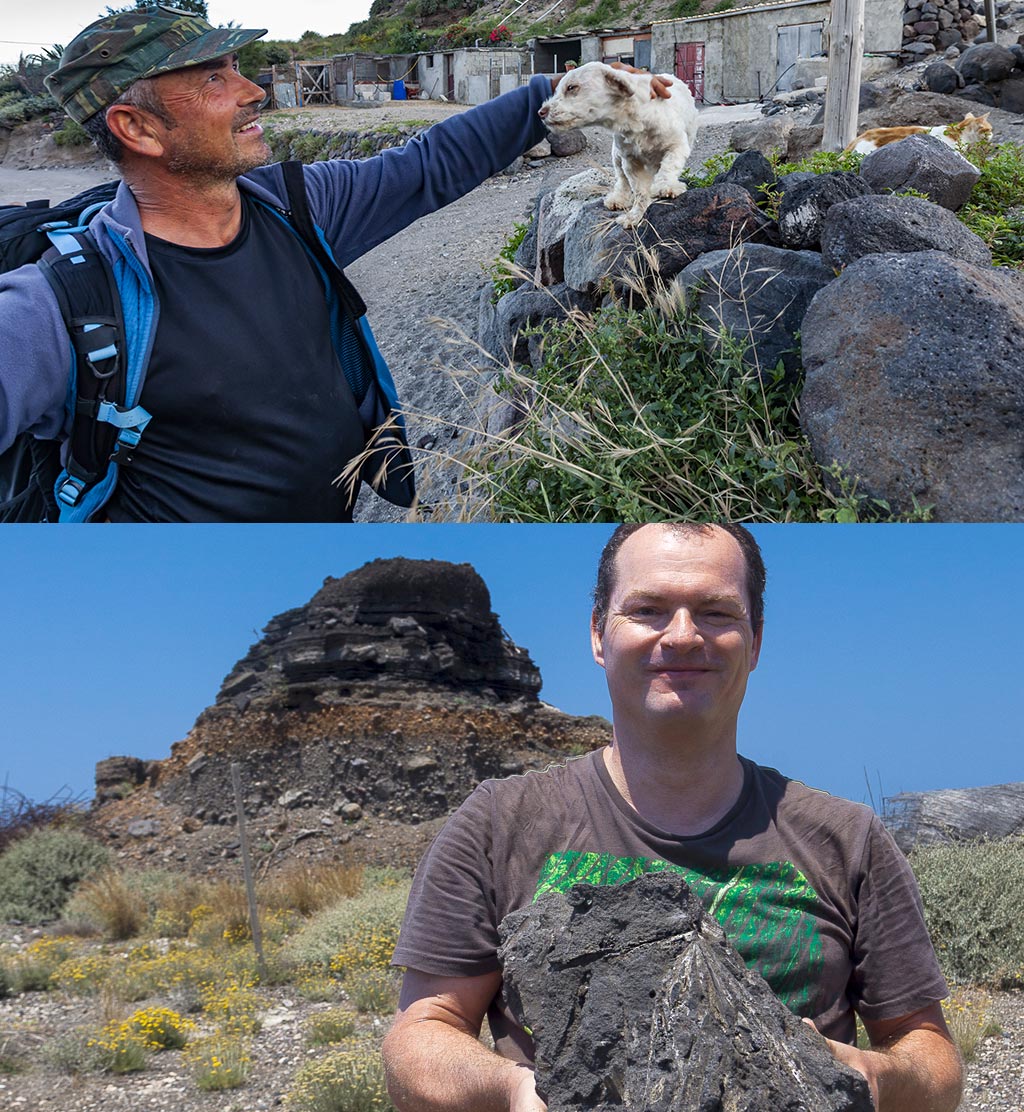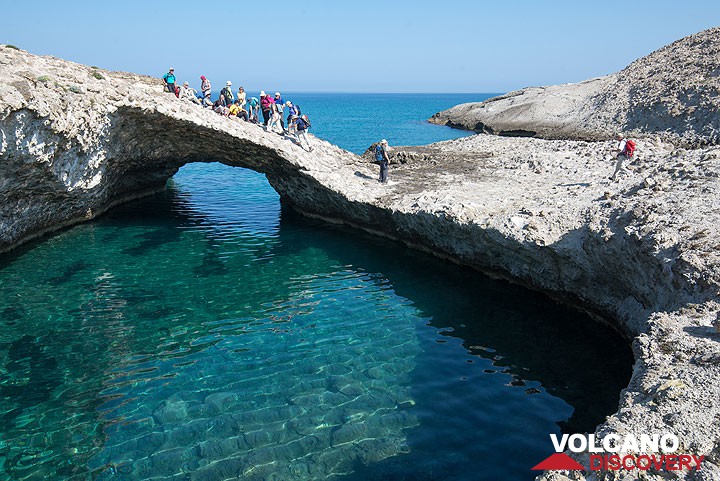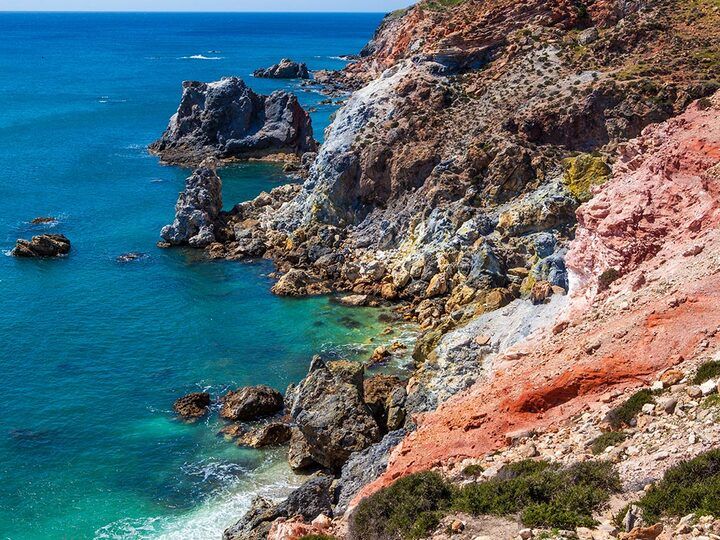6 days Milos
Day 1: Arrival on Milos island
Arrival on Milos
Day 2: Phylakopi - Sarakiniko - Plaka
Half-day walk along the spectacular north coast (ancient obsidian trading center of Phylakopi, Papafrankos and Sarakiniko). Lunch and swim break at Sarakiniko.
In the afternoon, transfer to the capital, Plaka, visit of the charming medieval village, its fortress, the Ancient Acropolis with the Greek theater, the place the famous Venus statue was found, early-Christian catacombes.
Optional scenic hike back to the hotel (or transfer by taxi).
Day 3: Abandoned sulfur mine and mineral beach
In the morning, visit of an abandoned sulfur mine on the western coast (spectacular scenery).
Transfer to the paradise-like beach of Paleochori, with its hot springs, fumaroles, colorful rocks.
Lunch in a wonderful beach restaurant. Afternoon: swim break, optional 2 hour walk in the area.
Late afternoon: return to Adamas. Visit of the interesting Mining Museum before dinner.
Day 4: Spectacular boat trip around Milos and to Kimolos Island
Free day - a great option is to take full-day boat tour around the island with its spectacular volcanic coastline (approx. 50 EUR per person). Delicious lunch on board. Free evening.
Day 5: 4x4 safari: Tsingrado, Kalamos and Vani baryte mine
Visit of Tsingrado explosion crater, Kalamos lava dome with active fumaroles.
Lunch and swimming break at a beach. Short hike and 4x4 drive to Cape Vani, visit of the abandoned manganese-baryte mine.
Day 6: End of tour or extension
Transfer to airport / port, or own extension.
Arrival info:
Depends on your arrival at Athens aiport. There are two possibilities how to get to Milos. You can get a direct flight to Milos airport or you can take a ferry boat from Piraeus harbour (about 4-7 h to Milos Island). It is possible to get earlier to Athens and to stay one or more nights there for sightseeing. A hotel room in Athens is about 80-120 € a double room.
Tour guide
The tour is normally guided either by German volcanologist Dr. Tom Pfeiffer or photographer and amateur geologist Tobias Schorr. Both have been traveling on the Greek volcanic areas (Methana, Milos, Santorini, Nisyros) for more than 20 years and know the islands better than even most local people do.
Tom completed his PhD studies on the topic of the great Minoan eruption of Santorini. He made the important discovery of a 3600-year-old olive tree buried alive in the pumice deposit that now can be seen in the small geological museum in Perissa.
This allowed the most precise dating of one of the most significant natural event in the Bronze age (to 1613+-13 years BC) so far.
His colleague Tobias, with whom Tom alternates on this tour, is a true specialist for Greece in general, boasting in-depth knowledge about its culture, history, people, flora, fauna and of course geology. He is known for his good eye and discoveries of rare minerals, plants, animals, or hidden archeological artifacts during the various excursions.

Tom and Tobias on Santorini




